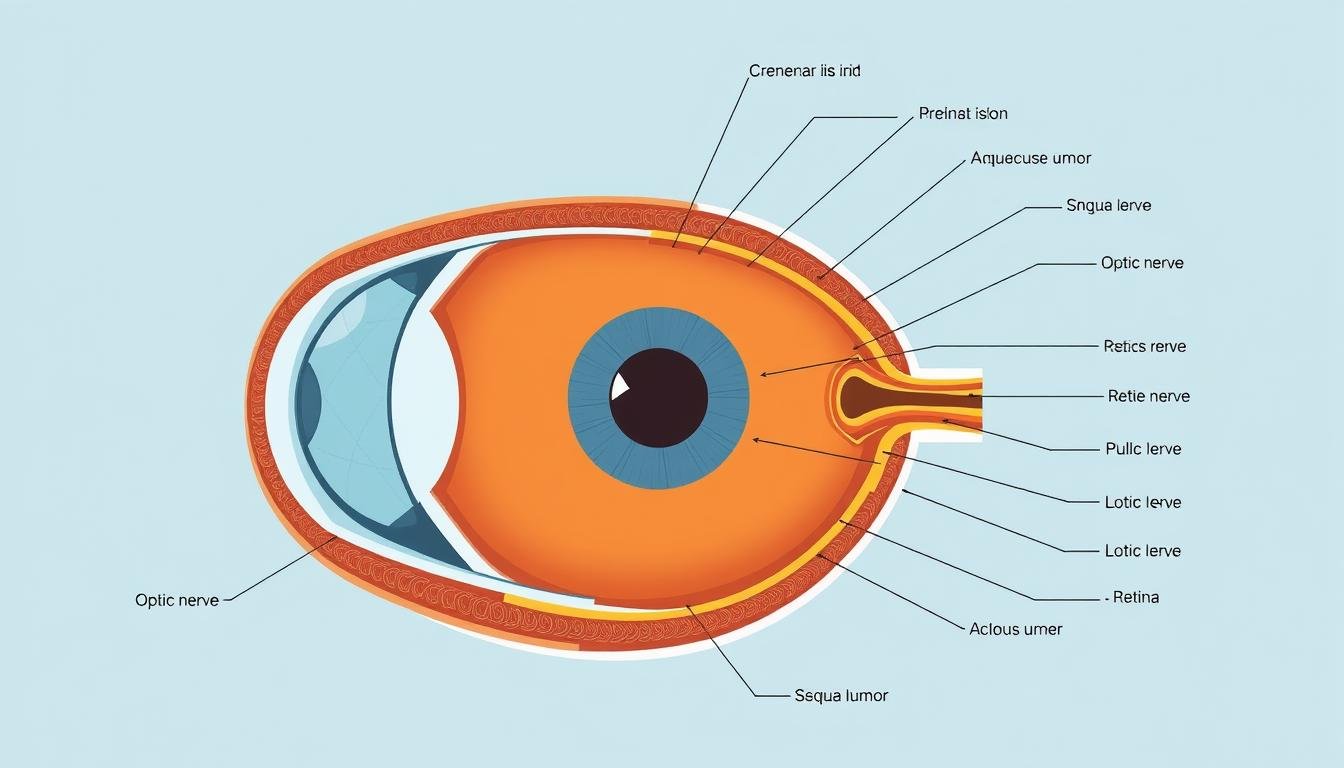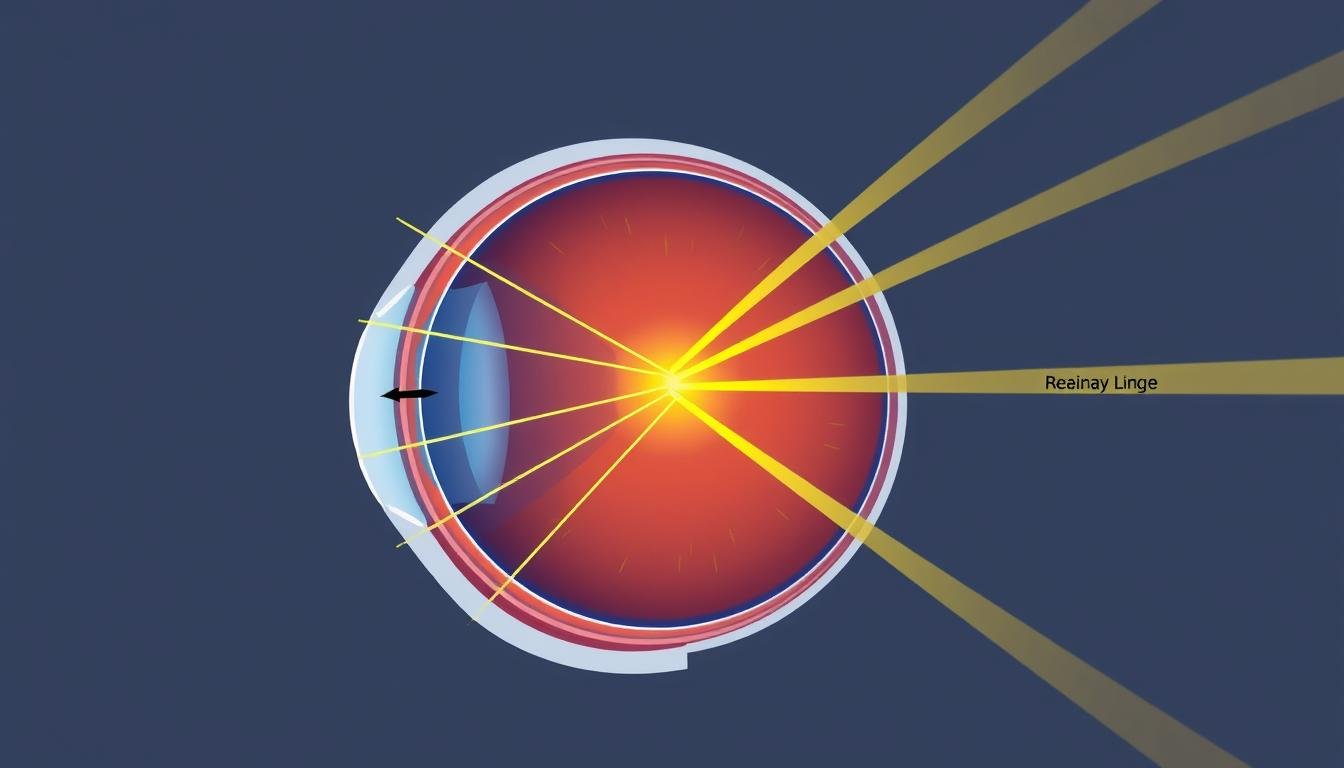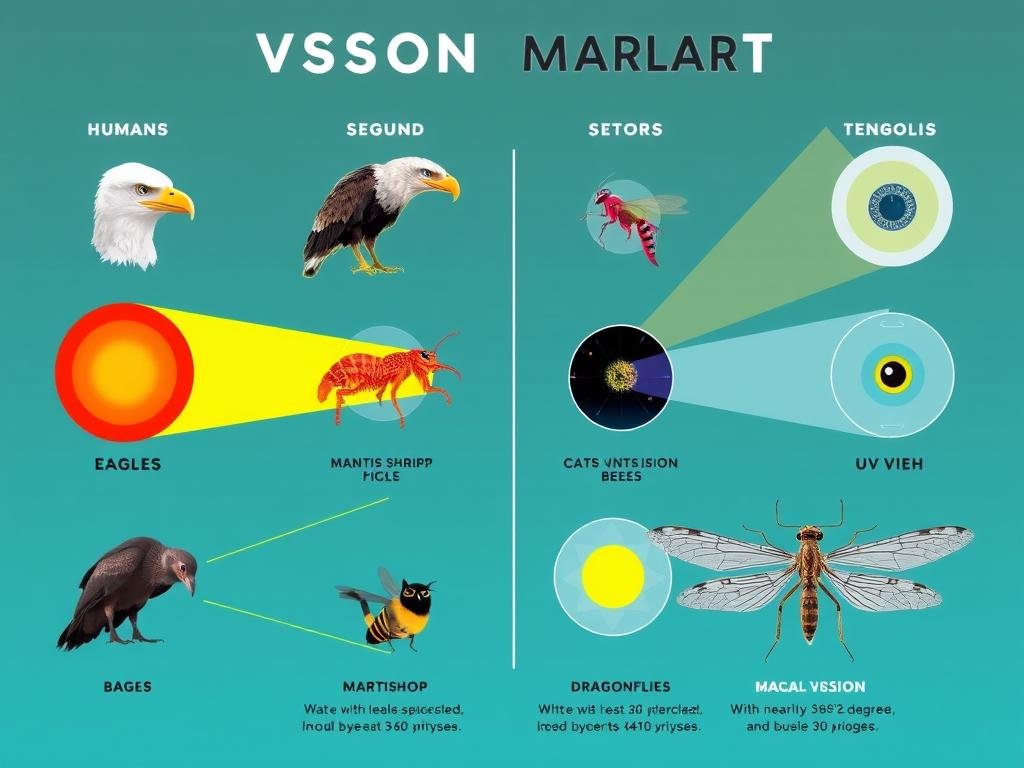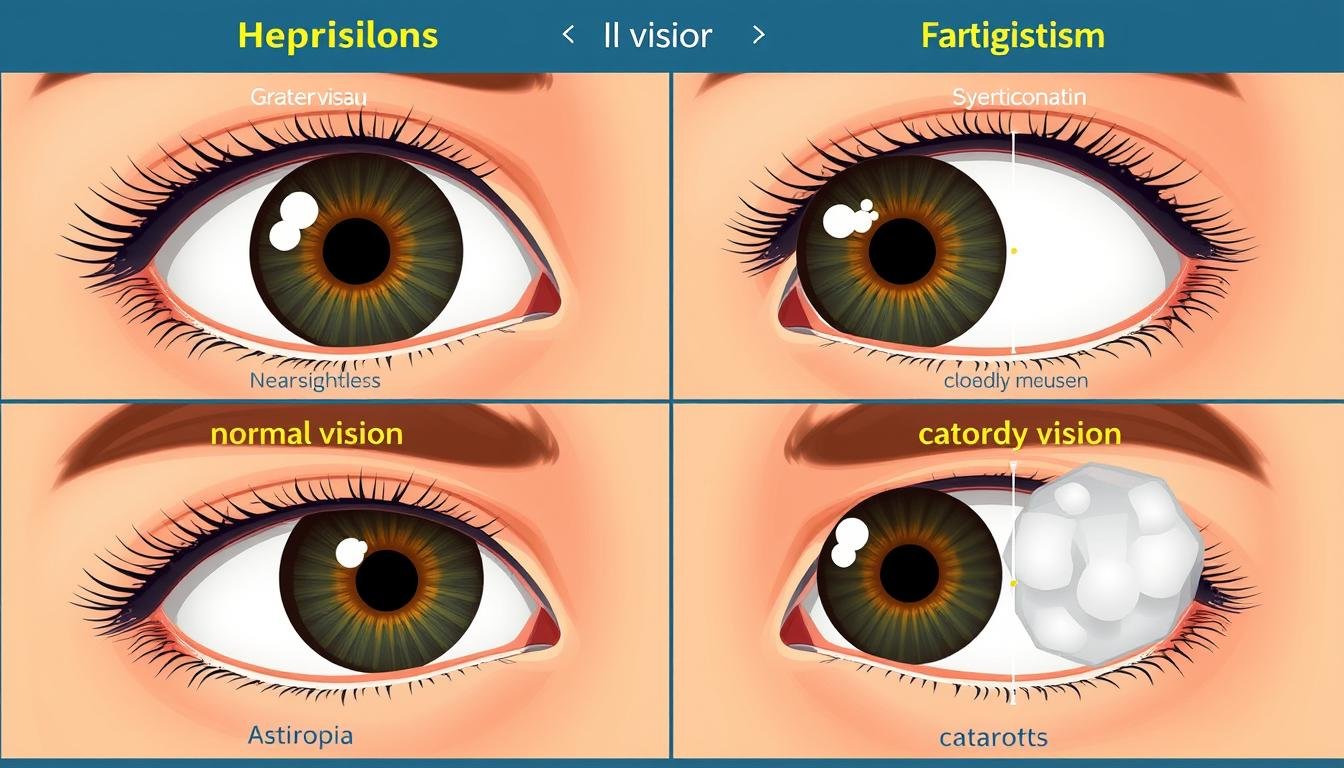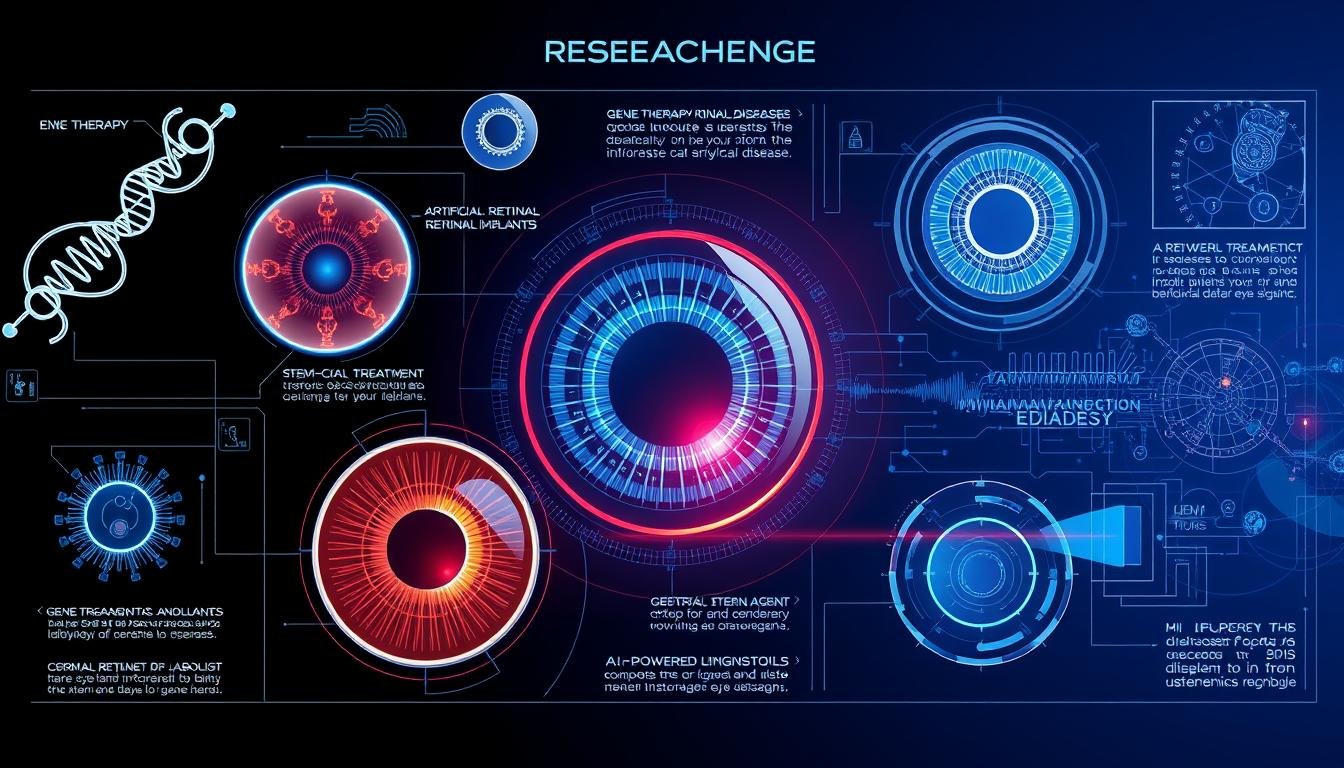The human eye is a remarkable organ that allows us to perceive the world around us. This comprehensive study of eyes explores the intricate anatomy, function, and care of these vital sensory organs. From the cornea to the retina, understanding how our eyes work helps us appreciate their complexity and importance in our daily lives. Join us as we delve into the fascinating science of vision and discover how these small but powerful organs process light to create the images we see.Anatomy of the Human Eye: A Detailed Study of Eyes

The eye is a complex organ composed of several specialized structures working together to capture and process light. Each component plays a crucial role in the study of eyes and understanding vision mechanics.
Outer Layer: The Eye’s Protective Shield
The outer layer of the eye consists of two main structures:
- Hornhaut: This clear, dome-shaped surface covers the front of the eye. It acts as the eye’s outermost lens, controlling and focusing the entry of light. The cornea contributes to approximately 65-75% of the eye’s total focusing power.
- Sklera: Often called the “white of the eye,” this tough, fibrous tissue protects the inner components and maintains the eye’s shape. It covers approximately 83% of the eye’s surface.
Middle Layer: The Vascular Component
The middle layer contains structures essential for light regulation and blood supply:
- Iris: This colored part of the eye controls how much light reaches the retina by adjusting the size of the pupil. The iris contains pigments that determine eye color.
- Schüler: The black circular opening in the center of the iris that allows light to enter the eye. It dilates (widens) in dim light and constricts (narrows) in bright light.
- Ciliary Body: This structure produces aqueous humor and contains muscles that change the shape of the lens for focusing.
- Choroid: A layer of blood vessels that supplies oxygen and nutrients to the retina and other parts of the eye.
Inner Layer: Light Detection and Processing
The innermost layer is where light is converted into neural signals:
- Retina: This light-sensitive tissue lines the back of the eye. It contains millions of photoreceptors called rods (for low-light vision) and cones (for color vision and detail).
- Makula: A small, specialized area of the retina responsible for central vision and fine detail perception. The fovea, at the center of the macula, provides the sharpest vision.
- Sehnerv: This bundle of more than one million nerve fibers carries visual information from the retina to the brain.
Fluid Systems: Maintaining Eye Health
Two important fluids fill the eye’s chambers:
- Aqueous Humor: A clear fluid that fills the anterior chamber (between the cornea and iris) and posterior chamber (between the iris and lens). It provides nutrients and maintains eye pressure.
- Glaskörperhumor: A gel-like substance that fills the large cavity behind the lens, helping maintain the eye’s shape and holding the retina in place.
Enhance Your Understanding of Eye Anatomy
Download our detailed eye anatomy diagram to reference as you continue your study of eyes. Perfect for students, healthcare professionals, or anyone interested in vision science.
Download Eye Anatomy Diagram
How Vision Works: The Science Behind Sight

The process of vision is a remarkable example of how our body transforms external stimuli into meaningful information. This study of eyes reveals the intricate journey from light to perception.
The Path of Light: From World to Retina
Vision begins when light reflects off objects and enters our eyes:
- Lichteintritt: Light rays first pass through the cornea, which bends (refracts) the light.
- Pupil Regulation: The iris adjusts the pupil size to control the amount of light entering the eye.
- Objektivfokussierung: The lens further refracts light and adjusts its shape (accommodation) to focus images at different distances.
- Vitreous Passage: Light travels through the vitreous humor to reach the retina.
- Retinal Projection: The image projects onto the retina upside-down and reversed left-to-right.
Photoreception: Converting Light to Neural Signals
The retina contains specialized cells that transform light into electrical signals:
- Rods: Approximately 120 million rod cells provide black-and-white vision and function well in low light.
- Cones: About 6-7 million cone cells provide color vision and detailed sight. They come in three types: red, green, and blue sensitive.
- Phototransduction: When light strikes these photoreceptors, a complex biochemical process converts light energy into electrical signals.
Neural Processing: From Eye to Brain
The journey continues as signals travel from the eye to the brain:
- Signal Integration: Retinal cells process and integrate visual information before sending it to the brain.
- Optic Nerve Transmission: Electrical signals travel through the optic nerve, which contains about one million nerve fibers.
- Optic Chiasm: At the optic chiasm, fibers from the nasal retina cross to the opposite side of the brain, while temporal retina fibers remain on the same side.
- Visual Cortex Processing: Signals reach the primary visual cortex in the occipital lobe, where basic processing occurs.
- Higher Visual Processing: Information is then distributed to other brain areas for complex processing of color, motion, depth, and object recognition.
Brain-Eye Coordination: A Two-Way Street
Vision is not a one-way process; the brain and eyes work together continuously:
- Eye Movements: Six extraocular muscles control precise eye movements, directed by brain signals.
- Binocular Vision: The brain combines slightly different images from each eye to create depth perception (stereopsis).
- Visual Attention: The brain directs the eyes to focus on specific objects of interest.
- Visual Memory: Past experiences help the brain interpret what we see, filling in gaps and recognizing familiar objects.
5 Surprising Facts About Animal Vision

Mantis Shrimp: The Color Champion
While human eyes have three types of color receptors (cones), the mantis shrimp has 16 different types of photoreceptors. This allows them to see ultraviolet, infrared, and polarized light that humans cannot perceive. Their complex visual system can process colors almost instantaneously without the need for extensive brain processing.
Eagles: Nature’s Telescopes
Eagles have vision that is 4-8 times sharper than human vision. Their retinas contain five times more photoreceptors, and they can see ultraviolet light. An eagle flying at 1,000 feet can spot a rabbit moving almost a mile away. This exceptional vision is due to their larger eyes relative to head size and a higher concentration of cones in their retinas.
Dragonflies: Nearly 360° Vision
Dragonflies possess compound eyes with up to 30,000 facets, each functioning as a separate visual receptor. This gives them nearly 360-degree vision and the ability to detect movement up to 60 feet away. Their brain processes visual information so quickly that they can track and intercept prey with over 95% accuracy, even when flying at speeds of 30 mph.
Chameleons: Independent Eye Control
Chameleons can move each eye independently, giving them the ability to look in two different directions simultaneously. Their eyes can rotate 180 degrees horizontally and 90 degrees vertically, providing a full 360-degree field of vision without moving their head. This adaptation helps them spot both predators and prey while remaining motionless.
Scallops: Hundreds of Primitive Eyes
Scallops have up to 200 tiny eyes along the edge of their mantle. Unlike our camera-type eyes, each scallop eye contains a concave mirror made of crystals that reflects light onto a retina. This unique structure allows them to detect light, dark, and motion, helping them escape predators despite lacking a brain as we understand it.
These fascinating adaptations highlight the diverse ways vision has evolved across species. While the human eye is remarkable, our study of eyes across the animal kingdom reveals the incredible variety of visual systems that have developed to suit different environmental needs and survival strategies.
Protect Your Precious Vision
Get our comprehensive Vision Care Guide with practical tips for maintaining healthy eyes in the digital age, preventing common disorders, and understanding when to seek professional help.
Download Free Vision Care Guide
Common Eye Disorders: Understanding Vision Problems

As our understanding of eye health advances, the study of eyes has revealed numerous conditions that can affect vision. Here are some of the most common disorders and their impact on visual function:
Refractive Errors: When Focus Fails
Myopia (Nearsightedness)
Affecting approximately 30% of the U.S. population, myopia occurs when the eyeball is too long or the cornea too curved. This causes light to focus in front of the retina rather than directly on it. People with myopia can see nearby objects clearly, but distant objects appear blurry. According to 2023 WHO statistics, myopia affects about 2.6 billion people globally and is projected to affect 50% of the world population by 2050.
Hyperopia (Farsightedness)
The opposite of myopia, hyperopia occurs when the eyeball is too short or the cornea too flat. Light focuses behind the retina, making nearby objects appear blurry while distant objects may be clearer. Approximately 5-10% of Americans have significant hyperopia. The condition often becomes more noticeable with age as the eye’s lens loses flexibility.
Astigmatism
This common condition results from an irregularly shaped cornea or lens, causing light to focus on multiple points rather than a single point on the retina. This creates blurred or distorted vision at all distances. About 1 in 3 people have some degree of astigmatism, often alongside myopia or hyperopia.
Presbyopia
A natural part of aging, presbyopia affects the eye’s ability to focus on close objects. It typically becomes noticeable around age 40-45 as the lens becomes less flexible. According to WHO data from 2023, presbyopia affects an estimated 1.8 billion people worldwide, including 80% of adults over 45.
Age-Related Eye Diseases: The Impact of Time
Katarakte
Cataracts involve clouding of the eye’s lens, leading to blurry vision, faded colors, and increased sensitivity to glare. They are the leading cause of blindness worldwide. WHO statistics from 2023 indicate that cataracts account for 51% of global blindness, affecting about 94 million people. The condition primarily affects older adults, with more than half of Americans having cataracts or cataract surgery by age 80.
Altersbedingte Makuladegeneration (AMD)
AMD damages the macula, the central part of the retina responsible for sharp, detailed vision. It leads to a loss of central vision while peripheral vision remains intact. According to 2023 WHO data, AMD affects 196 million people globally and is the leading cause of severe vision impairment in developed countries among people over 60.
Andere signifikante Augenerkrankungen
Glaukom
Often called the “silent thief of sight,” glaucoma damages the optic nerve, typically due to increased pressure within the eye. It leads to gradual peripheral vision loss that may go unnoticed until significant damage has occurred. The 2023 WHO report indicates that glaucoma affects approximately 76 million people worldwide and is the second leading cause of blindness globally.
Diabetische Retinopathie
A complication of diabetes, this condition damages blood vessels in the retina. In its early stages, it may cause no symptoms, but as it progresses, it can lead to vision loss. According to WHO’s 2023 data, diabetic retinopathy affects about 146 million people globally and is the leading cause of vision loss in working-age adults in developed countries.
Global Vision Impairment Statistics (WHO 2023): Approximately 2.2 billion people worldwide have a vision impairment, with at least 1 billion cases being preventable or yet to be addressed. Low- and middle-income regions bear about 90% of the global burden of vision impairment.
Latest Research Breakthroughs in Ophthalmology

The field of ophthalmology continues to advance rapidly, with new discoveries enhancing our understanding and treatment of eye conditions. Recent breakthroughs in the study of eyes have opened exciting possibilities for vision care:
Gene Therapy for Retinal Diseases
Scientists have made remarkable progress in treating inherited retinal diseases through gene therapy. In 2023, researchers successfully used CRISPR-Cas9 gene editing to correct mutations responsible for retinitis pigmentosa in human stem cells. This approach shows promise for treating various genetic eye disorders by delivering functional genes to replace defective ones.
“Gene therapy represents a paradigm shift in how we approach previously untreatable inherited eye diseases,” says Dr. Elena Markov, Director of Retinal Research at the International Vision Institute. “We’re now able to address the root genetic causes rather than just managing symptoms.”
Artificial Intelligence in Diagnosis
AI algorithms have demonstrated remarkable accuracy in detecting eye conditions from retinal images. Recent studies show that deep learning systems can identify diabetic retinopathy, glaucoma, and AMD with over 95% accuracy, sometimes outperforming human specialists. These tools are particularly valuable for screening in underserved areas with limited access to ophthalmologists.
The integration of AI with portable imaging devices has created opportunities for remote screening and earlier intervention, potentially saving millions from preventable vision loss.
Bionic Eyes and Visual Prosthetics
Advances in bioelectronics have led to the development of retinal implants that can restore partial vision to people with certain forms of blindness. The latest generation of these devices provides higher resolution images and better integration with the brain’s visual processing system.
Researchers are also exploring brain-computer interfaces that bypass damaged eyes entirely, sending visual information directly to the brain’s visual cortex. Early clinical trials have shown promising results for this approach.
Regenerative Medicine
Stem cell therapy has shown remarkable potential for treating corneal damage and certain retinal conditions. Scientists have successfully grown miniature retinas (organoids) from stem cells, providing valuable models for studying eye development and disease.
“The ability to grow functional retinal tissue in the lab has revolutionized how we study eye diseases and test potential treatments,” explains Dr. James Chen, Professor of Regenerative Ophthalmology at Pacific Medical University. “This approach allows us to create personalized models using a patient’s own cells.”
Drug Delivery Innovations
Novel drug delivery systems are transforming treatment for chronic eye conditions. Extended-release implants can now deliver medication for up to three years, reducing the need for frequent injections. Researchers have also developed contact lenses that slowly release medication, improving treatment adherence and effectiveness for conditions like glaucoma and dry eye.
Telemedicine and Remote Monitoring
The integration of smartphone technology with specialized attachments has enabled remote eye examinations and monitoring. Patients can now perform certain vision tests at home and transmit the results to their eye care provider. This approach has proven particularly valuable for managing chronic conditions and expanding access to care in rural areas.
Stay Informed About Vision Science Advances
Subscribe to our quarterly Vision Science Update to receive the latest research findings, treatment innovations, and eye care recommendations directly to your inbox.
Subscribe to Vision Updates
Practical Eye Care Tips for Digital Age Lifestyles

In today’s digital world, our eyes face unprecedented challenges. Extended screen time, artificial lighting, and indoor lifestyles all impact eye health. Based on the latest study of eyes and vision science, here are practical recommendations for maintaining optimal eye health:
The 20-20-20 Rule: Digital Eye Strain Prevention
Digital eye strain affects up to 65% of computer users. Combat this with the simple 20-20-20 rule:
- Every 20 minutes of screen time
- Look at something 20 feet away
- For at least 20 seconds
This practice reduces eye muscle fatigue and helps maintain focusing flexibility. Consider using a timer app to remind yourself until it becomes habitual.
Optimal Screen Ergonomics
Proper positioning of digital devices significantly reduces eye strain:
- Position your monitor about arm’s length away (20-24 inches)
- The top of the screen should be at or slightly below eye level
- Adjust screen brightness to match your surroundings
- Use matte screen filters to reduce glare
- Consider using night mode or blue light filters in the evening
Ernährung für die Augengesundheit
Certain nutrients are particularly beneficial for maintaining healthy eyes:
Essential Nutrients
- Lutein and Zeaxanthin: Found in leafy greens, these carotenoids protect the macula from blue light damage
- Omega-3 Fatty Acids: Present in fish, flaxseed, and walnuts, they support tear production and reduce inflammation
- Vitamin A: Critical for night vision and corneal health, found in orange vegetables and liver
- Vitamin C: An antioxidant that helps maintain blood vessels in the eye, abundant in citrus fruits and berries
- Vitamin E: Protects cells from oxidative damage, found in nuts, seeds, and vegetable oils
- Zinc: Important for retinal health and night vision, present in oysters, beef, and legumes
Flüssigkeitszufuhr und Augengesundheit
Proper hydration is essential for tear production and overall eye comfort. Aim to:
- Drink at least 8-10 glasses of water daily
- Limit alcohol and caffeine, which can be dehydrating
- Use humidifiers in dry environments
- Consider preservative-free artificial tears if you experience dry eye symptoms
Schutzmaßnahmen
Safeguarding your eyes from environmental hazards is crucial:
- UV Protection: Wear sunglasses that block 99-100% of UVA and UVB radiation, even on cloudy days
- Safety Eyewear: Use appropriate eye protection during hazardous activities, sports, or when working with tools
- Contact Lens Hygiene: Follow proper cleaning and replacement schedules to prevent infections
- Hand Hygiene: Avoid touching or rubbing your eyes with unwashed hands
Regelmäßige Augenuntersuchungen
Comprehensive eye exams are essential for maintaining eye health:
- Adults 18-60: Every 2 years (more frequently if you have risk factors)
- Adults 61+: Jährlich
- Contact lens wearers: Jährlich
- People with diabetes or high blood pressure: Annually or as recommended by your doctor
Remember that many serious eye conditions develop without early symptoms. Regular exams can detect problems before they affect your vision.
Frequently Asked Questions About Vision and Eye Health

How do eyes see color?
Color vision begins with specialized cells in the retina called cones. Humans typically have three types of cones, each sensitive to different wavelengths of light:
- S-cones (short wavelength): Most sensitive to blue light (420-440 nm)
- M-cones (medium wavelength): Most sensitive to green light (534-545 nm)
- L-cones (long wavelength): Most sensitive to red light (564-580 nm)
When light enters the eye, these cones are stimulated to varying degrees depending on the wavelengths present. The brain interprets these different patterns of cone activation as specific colors. For example, when all three types of cones are equally stimulated, we perceive white light. The absence of stimulation appears as black.
This trichromatic system allows humans to distinguish approximately 1 million different colors. Some animals, like mantis shrimp, have more types of photoreceptors and can perceive ultraviolet and polarized light that humans cannot see.
Can eye exercises improve vision?
The effectiveness of eye exercises depends on what aspect of vision you’re trying to improve:
- For refractive errors (nearsightedness, farsightedness, astigmatism): Scientific evidence does not support claims that eye exercises can correct these conditions. These vision problems result from the physical shape of the eye or aging of the lens, which cannot be changed through exercises.
- For certain binocular vision problems: Vision therapy, a structured program of visual activities prescribed by eye care professionals, can be effective for specific conditions like convergence insufficiency (difficulty focusing both eyes together for near work) and certain types of strabismus (eye misalignment).
- For digital eye strain: Simple exercises like the 20-20-20 rule, focusing exercises, and conscious blinking can help reduce symptoms of digital eye strain but won’t change your prescription.
If you’re experiencing vision problems, it’s best to consult with an optometrist or ophthalmologist for proper diagnosis and treatment rather than relying solely on eye exercises.
Why do pupils dilate and constrict?
Pupil size is controlled by two sets of muscles in the iris:
- Sphincter pupillae: Circular muscles that contract to make the pupil smaller (constriction)
- Dilator pupillae: Radial muscles that contract to make the pupil larger (dilation)
Pupils change size for several reasons:
- Light regulation: In bright light, pupils constrict to reduce the amount of light entering the eye. In dim light, they dilate to allow more light in.
- Focus adjustment: Pupils constrict slightly during near focus (accommodation) to increase depth of field and improve image clarity.
- Emotional responses: Pupils dilate during emotional arousal, whether positive (excitement) or negative (fear).
- Medication effects: Certain drugs can cause pupil dilation (mydriasis) or constriction (miosis).
- Medical conditions: Abnormal pupil responses can indicate neurological issues or eye injuries.
This dynamic response system helps optimize vision across different lighting conditions and activities.
Key Takeaways from Our Study of Eyes

Understanding Eye Anatomy and Function
- The eye is a complex organ with multiple layers and structures working in harmony to enable vision
- Light passes through several structures (cornea, aqueous humor, lens, vitreous humor) before reaching the retina
- Photoreceptors in the retina convert light into electrical signals that travel to the brain via the optic nerve
- The brain processes these signals to create the images we perceive
Protecting Vision in the Modern World
- Digital device use requires regular breaks using the 20-20-20 rule
- Proper nutrition, hydration, and UV protection are essential for long-term eye health
- Regular comprehensive eye exams can detect problems before they affect vision
- Many serious eye conditions develop without early symptoms, making prevention crucial
The study of eyes reveals not just how we see the world, but offers a window into our overall health. As vision science advances, we continue to develop better ways to protect, preserve, and potentially restore this precious sense.
— Dr. James Chen, Professor of Regenerative Ophthalmology
Our eyes are remarkable organs that deserve proper care and attention. By understanding how they work and implementing preventive measures, we can maintain healthy vision throughout our lives. Whether you’re interested in the science behind vision or looking for practical ways to care for your eyes, this comprehensive study of eyes provides a foundation for appreciating and protecting one of our most valuable senses.
Complete Your Vision Science Education
Download our complete set of eye anatomy diagrams, vision care guides, and latest research summaries in one convenient package.
Get Complete Vision Science Package

